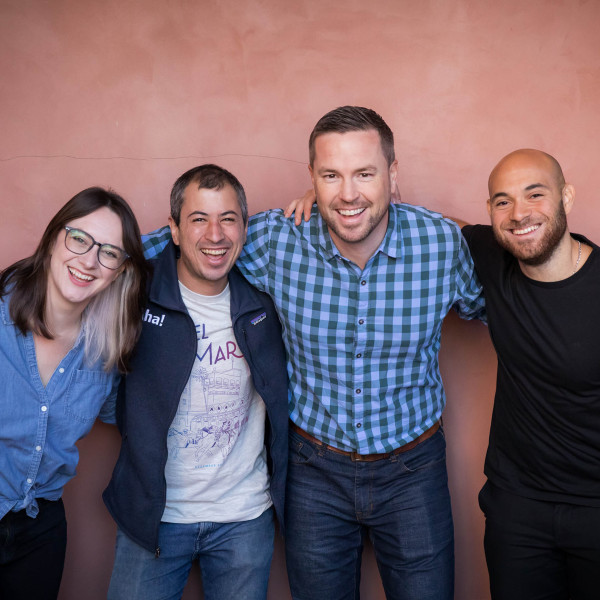
Product All-Star: 5 questions with Alessandro Alfano
Building products is an adventure. That is what makes it the best job in the world. But this role is not for everyone — true product success requires decisive action, continuous effort, and the relentless pursuit of value.
We have the honor of being connected to companies and product experts who go boldly and bravely. And we are asking folks to share their knowledge with you in the hopes it will inspire you in your own product career.
Alessandro Alfano is the senior vice president of product and technology transformation and operations at Accelya, a technology leader building software solutions for the airline industry. Based in London, United Kingdom, he focuses on cultivating the company's product portfolio, which includes airline offer distribution, revenue management, cargo operations management, payment solutions, data analytics, financial settlement software, and more. Day to day, Alessandro oversees the global product and technology framework and organization — working to streamline internal operations and optimize product outcomes.
Outside of work, Alessandro is co-founder of a biotech startup that develops 3D-printed human brain models for medical research and diagnostic calibration.
What was your first product role?
"While I was working in the loyalty department at Brussels Airlines, the Belgian flag carrier part of the Lufthansa Group, a project to redefine our bigger group product strategy was kicking off. I jumped at the chance to lead it as a product strategy manager. Our goal was to improve and standardize the passenger experience from booking to traveling to landing back home, and we needed to empathize with travelers. That involved speaking 1:1 with passengers, often right at the airport. These conversations helped me realize how working within the walls of an office can only do so much. If you want to understand what is really going on, you have to get out there and talk to your customers.
A few years later, I took a new role at Accelya as director of product management and started gravitating toward a more transversal and operational role. I excelled at uniting teams under a common framework and consolidating our tools. My manager recognized this natural inclination — along with the success it was bringing — and offered me a full-time product operations position.
Today at Accelya, my role continues to focus on product operations and transformation. But it has expanded to encompass all our global product and technology teams."
What are the most important traits for a product builder?
"Passion, patience, and courage."
"Passion fuels my product vision. It is my key driver. It helps me go below the surface of a problem and pushes me to learn new things. My passion for innovation is what keeps me going day to day.
Patience is fundamental for navigating through failures, changing direction, and dealing with differing perspectives."
"Patience helps me connect everyone — especially those with the strongest opinions — to the bigger picture."
"Here's what I mean: in a big enterprise organization, not everyone across the product and technology teams will see eye to eye. And that's OK. It is my job to work through tough differences of opinion and keep everyone attuned to our vision and overarching goals. Patience helps work out those differences and align everyone toward the same direction.
Lastly, courage is indispensable for making decisive moves in the face of uncertainty, which is near constant. It is crucial for making tangible progress on your product goals."
How do you achieve stakeholder alignment?
"Involve key stakeholders in the decision-making process early, and build the route to success together. A motivated larger team that believes in the goal is more effective than a tiny unit moving quickly. Constant rushing can make your direction uncertain.
On the other hand, engaging too many people too early can backfire. I once made this mistake. With a big decision ahead, I gathered all the stakeholders and began the meeting with an open question. The result? No conclusions, no possible plan of action — nothing. I felt it was a complete waste of time. We went in a hundred different directions and didn't achieve anything. Next time, I prepared options and scenarios in advance with a much smaller group.
My recommendation is to begin with a maximum of three highly influential people. Then, go to the broader audience with a point of view to react to. This leads to consensus and a solid action plan."
"Stakeholders need a strong reference point (whether that be a set of goals, a product strategy, or a roadmap) so their feedback is grounded in a shared understanding of priorities and objectives."
Related: How product managers achieve stakeholder alignment
How do product teams communicate and share information with cross-functional team members?
"Having a centralized tool for product management is critical. It serves as a single source of truth, a process enabler, and a data repository. And it integrates with other essential tools to unlock value for broader teams.
Take Aha! Roadmaps for example. I implemented it in my organization, and it has been the best lever to streamline our work both within and outside the product team."
Related: Which tools do product managers use?
What excites you most about the role?
"Our mission is to enable our teams by providing them with a system that allows them to focus on delivering their best work when bringing new innovations to customers. This means every new change or enhancement we introduce has an amplified impact across the whole organization and production outcomes. That is incredibly gratifying to my engineering brain."
Read more of the Product All-Star series.
Know an inspiring product builder? Nominate them to be featured in an upcoming post. They simply need to be doing quality work and using Aha! software.




